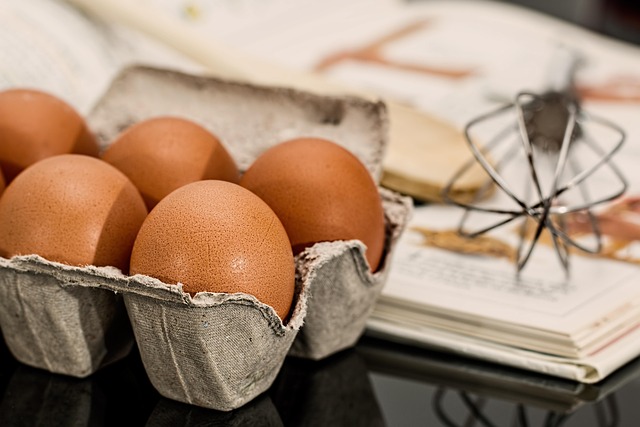Scaling Recipes: Convert Servings and Nutrient Counts Accurately
Accurate recipe scaling keeps servings consistent while preserving calories and nutrient balances. A reliable approach combines ingredient weighting, portion math, and nutrient tracking so that mealplans and labels remain trustworthy when you double, halve, or customize recipes.

Accurate scaling of recipes goes beyond simple multiplication. When you convert servings you must adjust ingredient amounts, recalculate calories and macronutrients, and check micronutrients and allergen information so each serving in a mealplan or label reflects the intended nutrition profile. Practical scaling keeps prep time and cost predictable and helps with consistent portioning for tracking, dietary needs, or food labeling.
This article is for informational purposes only and should not be considered medical advice. Please consult a qualified healthcare professional for personalized guidance and treatment.
How to scale servings and portions
Start by defining the original yield: number of servings and weight or volume per serving. Convert all ingredients to consistent units (grams or milliliters where possible) before scaling; volume measures like cups can vary by ingredient and packing. Use a multiplier derived from desired new servings divided by original servings to adjust ingredient quantities. For solid ingredients, round to practical measures for prep (for example, to the nearest 5 g or 1 tablespoon) while keeping track of precise totals for calorie and nutrient recalculation.
How do calories change when scaling recipes?
Calories scale linearly with mass for most ingredients, but rounding during practical prep can cause small per-serving differences. To compute new calories per serving, calculate total calories after scaling and divide by the new number of servings. When ingredients are substituted (e.g., full-fat for low-fat dairy), recalc total calories from ingredient nutrition data. For packaged ingredients, use label values per 100 g or per specified serving size to maintain consistency in nutrition tracking and labeling.
How to adjust macronutrients and micronutrients
Macronutrients—protein, carbohydrates, and fats—also scale with ingredient amounts, but their ratios can shift when you change proportions or swap ingredients. Micronutrients (vitamins and minerals) can be concentrated in specific foods (like spinach for iron or citrus for vitamin C), so scaling or replacing those items impacts totals disproportionately. Use a nutrition database or calculator to recalculate both macro and micro totals after scaling and verify that per-serving values meet dietary goals or regulatory requirements for labeling.
How to handle prep, ingredients, and cost when scaling
Scaling affects prep time and sometimes equipment needs: larger batches may require longer cooking times or different cookware. Ingredient availability and unit pricing can change cost per serving when you scale up or down. For larger batches, buying ingredients in bulk often reduces per-serving cost but may require storage planning. Track ingredient unit prices (cost per weight or volume) alongside scaled quantities to estimate total and per-serving cost for kitchen budgeting or menu pricing.
How to manage serving sizes for mealplan and tracking
Consistent portioning is crucial for mealplans and nutrient tracking. Use a kitchen scale to portion servings by weight, which reduces variability compared with volume scoops or visual estimates. Record both the scaled recipe’s total yield and the exact weight or volume of a single serving so that tracking apps or labels show accurate calories and nutrient counts. If distributing across containers, measure one sample serving and use that as the standard for the rest.
| Product/Service | Provider | Cost Estimation |
|---|---|---|
| Nutrition tracking and food database | MyFitnessPal (Under Armour) | Free tier; Premium approx. $9.99/month or $79.99/year |
| Detailed nutrient analysis and raw food data | Cronometer | Free tier; Gold approx. $5.99/month or $34.95/year |
| Recipe manager with scaling tools | Paprika Recipe Manager | One-time app purchase: Mobile ~$4.99, Desktop ~$29.99 |
| Recipe organization and scaling | BigOven | Free tier; Pro approx. $2.99/month or $24.99/year |
| Recipe discovery with scaling features | Yummly | Free tier; Yummly Pro approx. $4.99/month |
Prices, rates, or cost estimates mentioned in this article are based on the latest available information but may change over time. Independent research is advised before making financial decisions.
What to consider for allergies, labeling, and tracking
When scaling recipes for people with allergies or for commercial labeling, track potential allergens by ingredient and by cross-contact risk. Scaling may concentrate an allergen per serving if a previously minor ingredient becomes more prominent, so re-evaluate both ingredient lists and precautionary statements. For labels, ensure per-serving declarations reflect the scaled recipe’s actual nutrient and allergen profile; tracking tools can export nutrition facts that assist with compliant labeling and accurate consumer information.
Conclusion
Accurate recipe scaling links careful unit conversion, consistent portioning, and updated nutrient recalculation. Whether you are adjusting a home mealplan, preparing batch meals, or producing labeled products, systematically converting ingredients, recalculating calories, macronutrients, and micronutrients, and checking costs and allergen information helps maintain reliable servings and transparent nutrition information.




